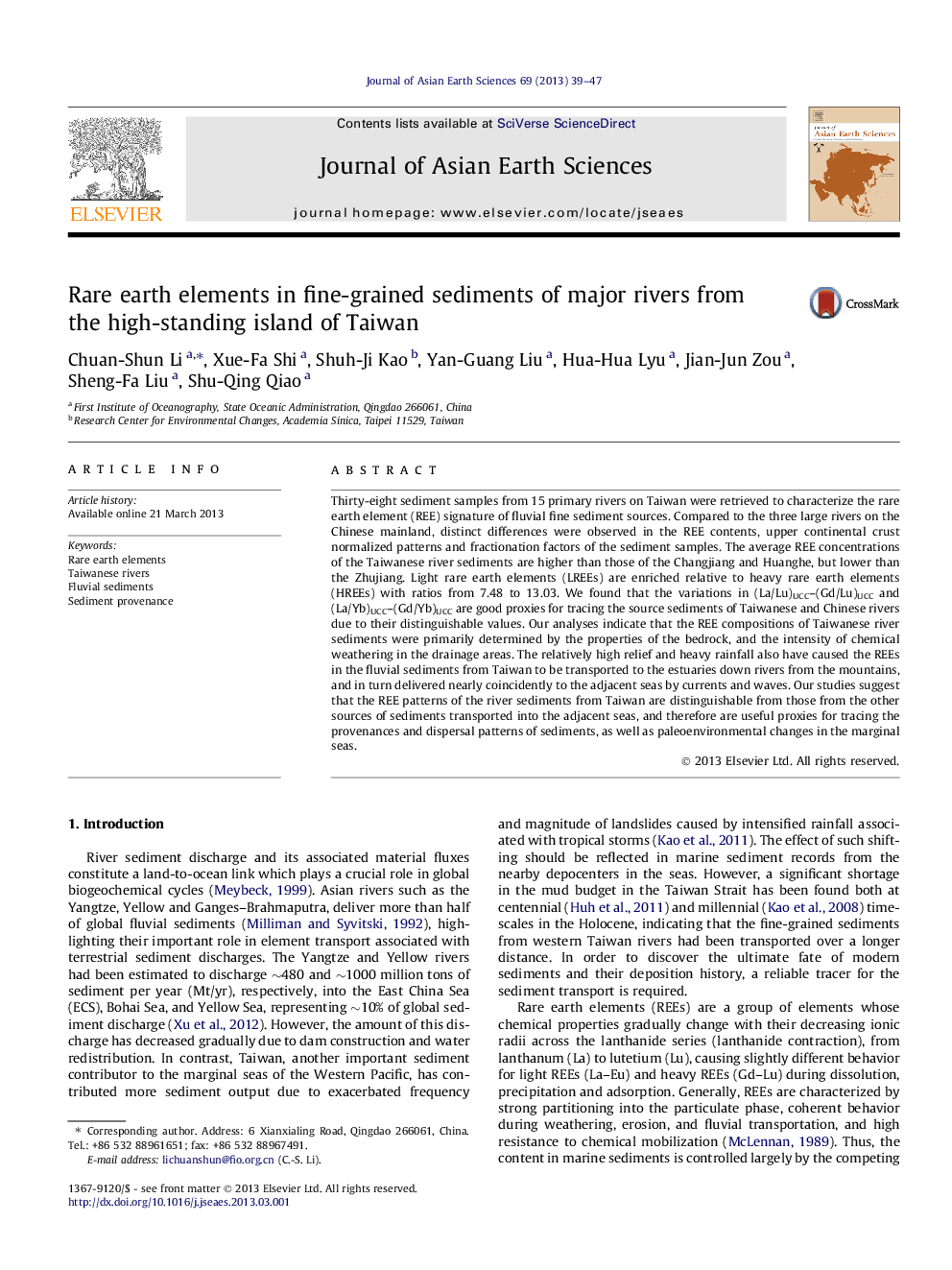| Article ID | Journal | Published Year | Pages | File Type |
|---|---|---|---|---|
| 4731102 | Journal of Asian Earth Sciences | 2013 | 9 Pages |
•We measured REE compositions of the fluvial sediment in Taiwan.•The average REE concentrations of fluvial sediment in Taiwan are higher than those of the Changjiang and Huanghe, but lower than the Zhujiang.•The REE patterns could be a useful tool for tracing sediment provenances.•Sediment provenance and chemical weathering exert important controls over the REE composition.
Thirty-eight sediment samples from 15 primary rivers on Taiwan were retrieved to characterize the rare earth element (REE) signature of fluvial fine sediment sources. Compared to the three large rivers on the Chinese mainland, distinct differences were observed in the REE contents, upper continental crust normalized patterns and fractionation factors of the sediment samples. The average REE concentrations of the Taiwanese river sediments are higher than those of the Changjiang and Huanghe, but lower than the Zhujiang. Light rare earth elements (LREEs) are enriched relative to heavy rare earth elements (HREEs) with ratios from 7.48 to 13.03. We found that the variations in (La/Lu)UCC–(Gd/Lu)UCC and (La/Yb)UCC–(Gd/Yb)UCC are good proxies for tracing the source sediments of Taiwanese and Chinese rivers due to their distinguishable values. Our analyses indicate that the REE compositions of Taiwanese river sediments were primarily determined by the properties of the bedrock, and the intensity of chemical weathering in the drainage areas. The relatively high relief and heavy rainfall also have caused the REEs in the fluvial sediments from Taiwan to be transported to the estuaries down rivers from the mountains, and in turn delivered nearly coincidently to the adjacent seas by currents and waves. Our studies suggest that the REE patterns of the river sediments from Taiwan are distinguishable from those from the other sources of sediments transported into the adjacent seas, and therefore are useful proxies for tracing the provenances and dispersal patterns of sediments, as well as paleoenvironmental changes in the marginal seas.
